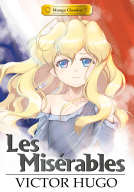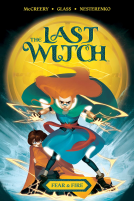
Wrapped in Plastic
Twin Peaks
by Andy Burns
This title was previously available on NetGalley and is now archived.
Send NetGalley books directly to your Kindle or Kindle app
1
To read on a Kindle or Kindle app, please add kindle@netgalley.com as an approved email address to receive files in your Amazon account. Click here for step-by-step instructions.
2
Also find your Kindle email address within your Amazon account, and enter it here.
Pub Date Feb 10 2015 | Archive Date Jan 07 2015
Description
In 1990, avant garde filmmaker David Lynch (Eraserhead, The Elephant Man, Dune, Blue Velvet) and acclaimed television writer Mark Frost (Hill Street Blues) teamed up to create a television show that would redefine what the medium could achieve in a one-hour drama. With Twin Peaks, the duo entranced audiences with the seemingly idyllic town, its quirky characters, and a central mystery — who killed Laura Palmer?
In a town like Twin Peaks, nothing is as it seems, and in Wrapped in Plastic, pop culture writer Andy Burns uncovers and explores the groundbreaking stylistic and storytelling methods that have made the series one of the most influential and enduring shows of the past 25 years.
Available Editions
| EDITION | Other Format |
| ISBN | 9781770412101 |
| PRICE | CA$16.99 (CAD) |
Average rating from 12 members
Featured Reviews
 Paul F, Reviewer
Paul F, Reviewer
This is a smooth easy read; I devoured it in two sittings of an hour each. The best parts are the interviews with the actors, particularly Sheryl Lee and Ray Wise, as well as the creators; for me the best note was Mark Frost saying he was a big fan of The Prisoner. Another great interview is Jennifer Lynch, who wrote Laura Palmer’s diary. There are some notes about David Lynch’s filmmaking style, especially how he takes advantage of bloopers and mistakes, which is technically how BOB was born. For the fan this is a whole lot of fun, and who would have expected that iconic image of the blood wiped across Laura’s photo to be. . . nope, that would be a spoiler. . .
Wow, what a strange few months it has been for Twin Peaks fans. After 25 years of teases and denials, Lynch and Frost finally announced we'll be getting a long-awaited continuation of the series in 2016, with Agent Cooper, Laura Palmer, and Audrey Horne already confirmed to return. In addition, Frost announced he'll be writing an accompanying novel to fill in the 25 years between the two series.
As a result, Wrapped in Plastic: Twin Peaks couldn't have come at a better time, even if the timing means Andy Burns finished the book before the news of a confirmed revival could provide a fitting epilogue.
It's a relatively short book and a quick read, but Burns does a great job of examining what made the show special, and of exploring its lasting legacy in terms of influence and inspiration. He breaks down the technical details of how scenes were framed, of how different effects were achieved, and of what kind of direction actors and writers were given to discover the characters. He talks about just how much influence Lynch's cinematic vision had on the series, and which of the other writers were most responsible for its most memorable moments. I was barely a teenager when Twin Peaks first aired, so I was largely ignorant of the technical, stylistic aspects. Looking back, and applying Burns' analysis to the scenes I remember, casts the series in a whole new light.
While the homages and tributes are obvious, such as the Darkwing Duck parody that I still quote to this day (and which he fondly recalls), the overall influence on TV is something I had never considered. We've become so accustomed to things like season-long story arcs, cinematic production values, and weird or experimental storytelling, that it's easy to forget how much Twin Peaks did first. Burns walks us through both sides of that influence, and really helps to put the show's legacy in context. We toss around terms like 'ground-breaking' all the time, but this is one of those shows where that term is completely deserved.
If you've never seen the show, this isn't likely to make you want to go back and watch the original series, but fans will find a lot to appreciate in Wrapped in Plastic: Twin Peaks. Along with reminding us of how fantastic the show was, it's a great recap of the characters and story lines, and a perfect way to get quickly reacquainted with the world Lynch and Frost created.
Since the announcement from David Lynch that Twin Peaks will be returning in 2016 following a 25 year break, interest in the surreal little Washington town is, well, Peak-ing! Articles discussing the show are appearing all over, even the mainstream media and social media is abuzz with weird quotes about owls, coffee, and cherry pie. If it’s been a long time since your last visit to the place with fantastic trees, or you’d just like to explore the town in a little more depth, then Andy Burns’ new book Wrapped in Plastic might be perfect for you.
Wrapped in Plastic is the fourth book in the Pop Classics series from ECW Press, a series designed to “offer intelligent but accessible arguments about why a particular pop phenomenon matters.” The book explores the show from a variety of angles but never digs deep into technicalities that could make the book less accessible to casual fans, making it a perfect introduction to further reading on the series. It’s short, punchy, and perfect for dipping into in short bursts while waiting in the car or sitting on the bleachers. The book begins with a look at the way modern TV differs from that of the pre-Peaks era, examining how much more bold and cinematic the medium has become over the decades. “Twin Peaks didn’t immediately redefine the night-time soap opera,” it says, it just “modeled ‘the unexplored possibilities that the medium held.’”
We begin with an exploration of the people and the town of Twin Peaks itself. There are discussions not only of superficial aspects of life such as Audrey Horne’s now iconic outfits, but of the way these elements are used to mask a darkness under the surface of the entire community. It’s a concept that would go on to be explored in shows such as Chris Carter’s Millennium (1996) and arguably Breaking Bad (2008). There is a brief history of how the show came to be on air in the first place with a look at David Lynch’s work up to that point and the shows that inspired it including British sci-fi show The Prisoner. Lynch’s directing style is discussed in detail, as is how it was passed on to others who worked on the show. Peaks star Dana Ashbrook (Bobby Briggs) describes the style as, “ethereal” with Lynch sharing dreams or music he felt would explain the vibe of what he wanted to get across. Other directors were, “not obligated to use the house style,” but rather asked to study the vocabulary of the pilot and use it to maintain a consistent feel to the show. Twin Peaks was never weird for weird’s sake despite how it might seem to those who never got the show. Rather those behind it were simply open to whatever spirit moves the artist. Rather than forcing weirdness (as happened with one director who didn’t quite understand what was required) the show simply went with the flow, whatever strange directions that flow might lead.
Away from the obvious weirdness of show aspects like the Log Lady and The Man from Another Place, Wrapped in Plastic also considers the more serious subjects tackled on Twin Peaks. The show was one of the first to tackle the subject of incest on American television, and certainly the first to do so on a network show. Spirituality was also explored through concepts like the Red and White lodges, through the Judeo-Christian iconography of the white horse seen by Sarah Palmer, and a scene inspired by the Tibetan Book of the Dead. The show allowed all of its characters to have complexity–even those with little more than bit parts–and gave them opportunities to change and grow throughout its run. The antagonistic relationship between town bigwig Benjamin Horne and his daughter Audrey is a strong example of this. We watch Audrey support her father through a mental breakdown that results not only in the two of them developing a strong bond, but also in the redemption of a character who had previously been squarely lumped into the bad guy category.
The book ends with a look at the way Twin Peaks has itself gone on to inspire new television. Many shows have parodied Twin Peaks including The Simpsons, Darkwing Duck, and Psych. The Latter turned an entire episode into a Twin Peaks homage—even going so far as to name the episode “Duel Spires”. Other shows have taken less direct inspiration. Picket Fences, Northern Exposure and Gravity Falls all have aspects that can be traced back to that strange small town. Wrapped in Plastic does a great job of exploring just why Twin Peaks has become such an important stop in the history of television. It’s somewhat meandering, without well-defined chapters, and occasionally jumps from idea to idea without giving them the word count you hope it would (I often found myself pausing to consult Google and further explore a name or idea) but as an introduction to thinking deeper about the show, it’s exactly what you would want.
Interestingly, at the very end of the book, a quotation from David Lynch’s daughter Jennifer (author of The Secret Diary of Laura Palmer) is included that vehemently denies any possibility of a new series. “I’ve heard it from the horse’s mouth,” she states, “there’s nothing in the works. What on Earth do people think would happen now? Everybody’s different. You can’t go back there.” Whatever you may think, the truth is that since the manuscript for Wrapped in Plastic was completed, things have changed forever. We are indeed going back. As for what will happen, who’s to say? All I know is that gum I like has definitely come back in style.
GeekMom received this item for review purposes.
 Wayne M, Reviewer
Wayne M, Reviewer
'Wrapped in Plastic: Twin Peaks' by Andy Burns just continues my love of the Pop Classics series. So far I've read books on the Teenage Mutant Ninja Turtles, Elvis Costello, and now Twin Peaks. In all cases the subjects have been enthusiastically and well written about.
This time around, it's quirky Twin Peaks. The show that lasted only two seasons, but managed to change so much. Modern shows like True Detective, The Following, and Hannibal owe quite a bit to this landmark, even if they don't overtly acknowledge it. The television landscape before and after are discussed as is the fact that the shows creator came from Hollywood in a time when that didn't really happen. We read about the episodes that worked, and the ones that didn't. The movie is discussed as well as the way the characters changed as they encountered the Red Lodge. The influence of the show and the many homages are talked about, some funny, some strange. The show was ahead of it's time, and, for a show that got cancelled, it's found a loyal fan base.
Andy Burns points out the offbeat humor that a lot of people didn't get. His fandom is very infectious, and the writing is very well done. I was a fan of the show the first season, and it kind of lost me during the second, but after reading this, I might have to go back and revisit this strange, dark town with it's delicious pie and coffee. Thank you Andy Burns for reintroducing me to this series, and thank you Pop Classics for another fun entry.
I received a review copy of this ebook from ECW Press and NetGalley in exchange for an honest review. Thank you for allowing me to review this ebook.
Readers who liked this book also liked:
L.M Montgomery
Children's Fiction, Comics, Graphic Novels, Manga, Teens & YA
Tadashi Agi
Comics, Graphic Novels, Manga, Cooking, Food & Wine, Entertainment & Pop Culture
James Patterson; Imogen Edwards-Jones
Historical Fiction, Mystery & Thrillers, True Crime
